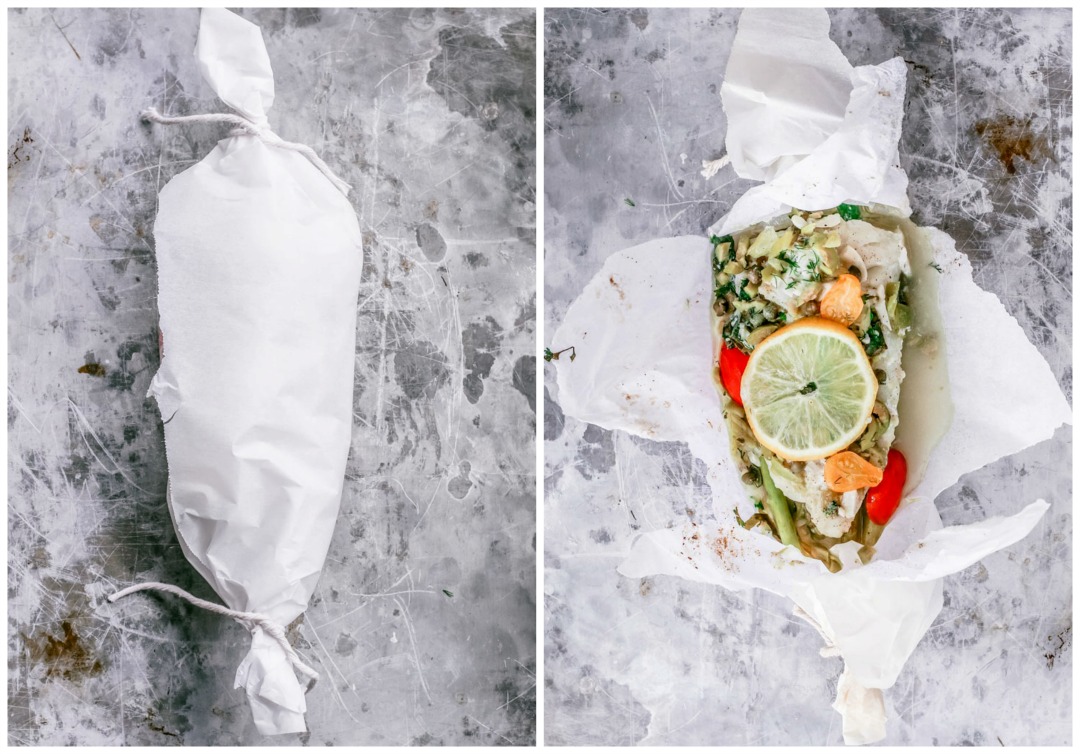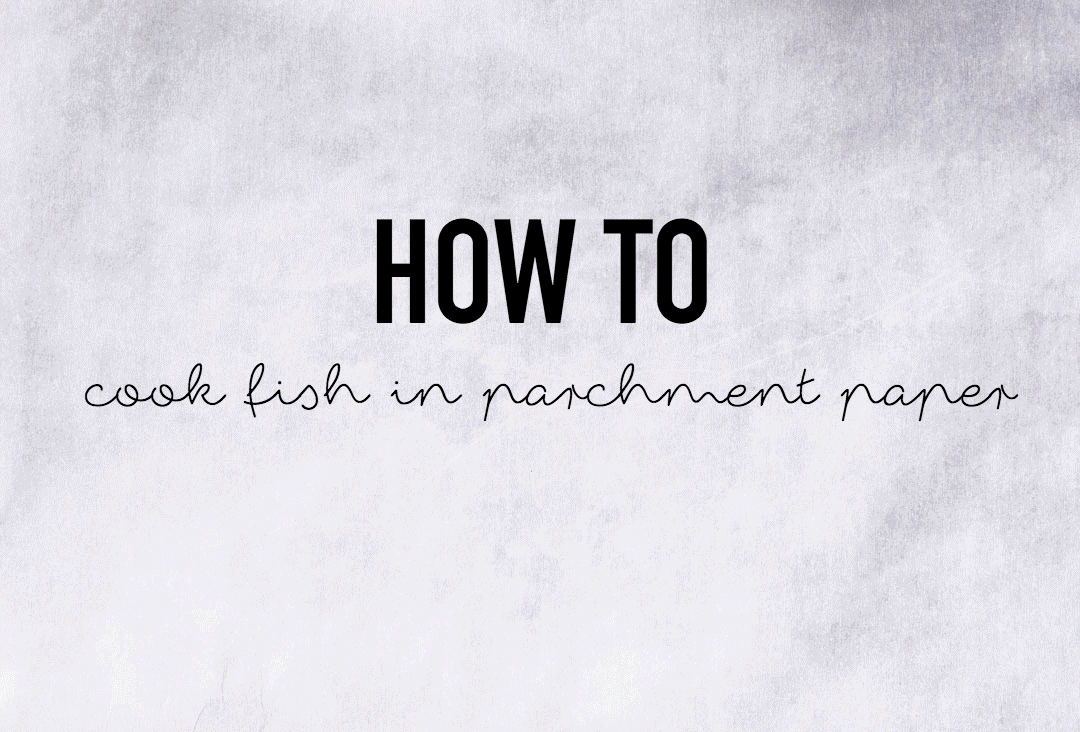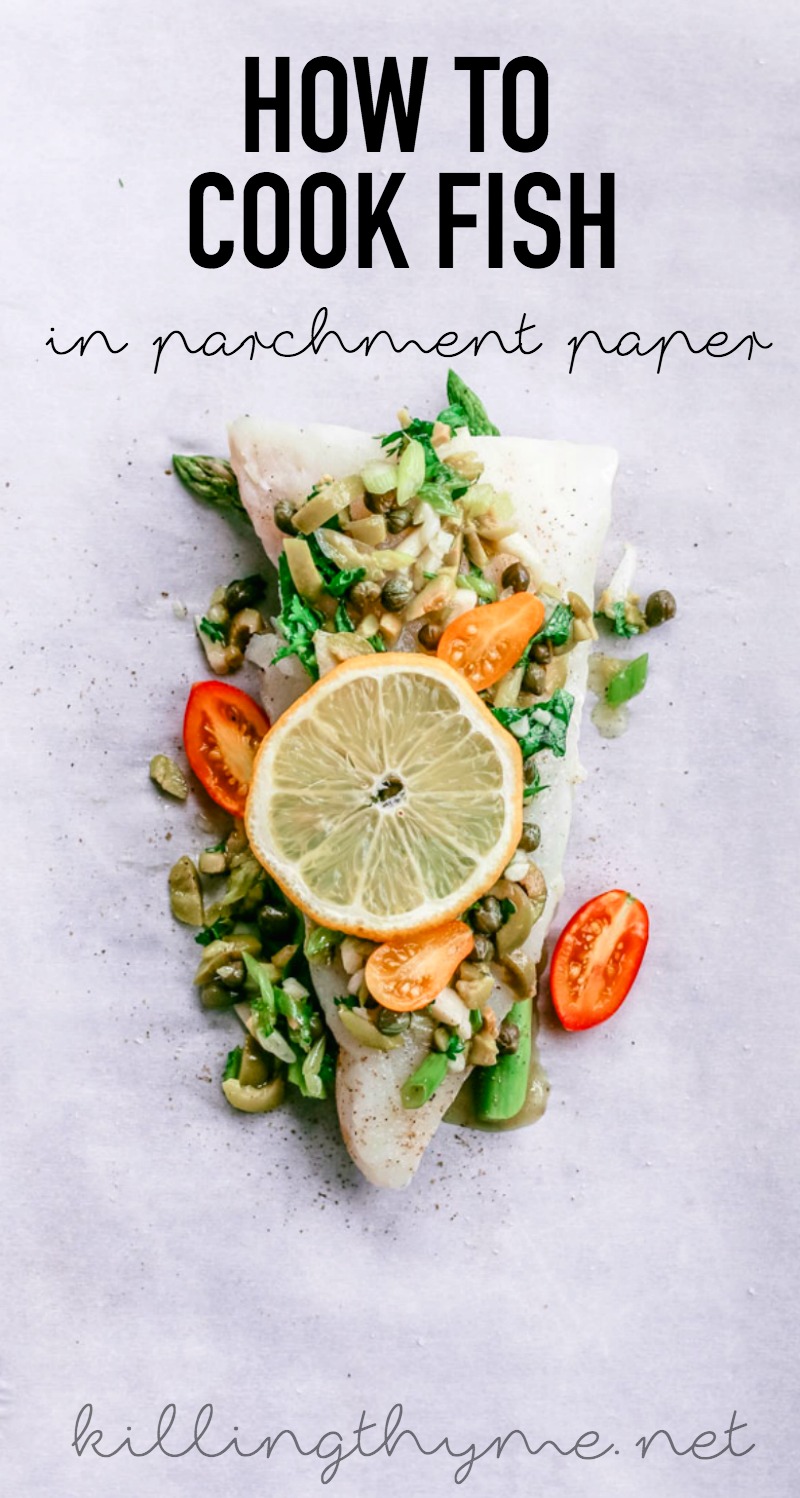How to Cook Fish in Parchment Paper
Fish steamed in parchment paper, also known as fish en papillote, is a foolproof way to dish up tender fish. Wrapped in a parchment pouch, the fish is steamed in its own juices and the juices of anything else you add to the mix, resulting in a flakey fillet that is jam-packed with flavor. The process is simple, quick, and leaves you with very minimal cleanup! This is one of my favorite ways to cook fish along with grilling on a cedar plank.
There are several ways to prepare parchment packets; I used to seal my packets by brushing the edges with a diluted egg wash, then fold the edges over one another to create a secure packet with no air vents. But after playing around, I’ve realized that the “twist and tie” method brings the same results to the table without the fuss. I’ll be more than happy to bring the sealed-packet method to the blog if I get enough requests! But until then, let’s stick to my go-to.
Twist and Tie
Materials
-
1. Prepare your food. This all depends on what recipe you’re following, or how your dressing your fish, but before you prepare your parchment, get your fish seasoned; have any sauces you might be using ready; and have your veggies washed, cut, and ready to place.
2. Prepare your parchment. Tear/cut parchment into segments — one segment per fish. The size of the parchment depends on the size of your fillets, but you should be fine with a piece of parchment that measures approx. 13 inches wide. Lay each segment down on a flat surface.
3. Place your food. If you’re using veggies that work well as planks, like asparagus or zucchini spears, set them down at the center of your parchment paper. Set down your fish and top with your wet component (this might be a sauce, olive oil, knobs of butter, wine, or freshly squeezed citrus). Place any additional toppings you’re using (grape tomatoes, olives, capers, artichokes, etc.), and a slice or two of a citrus fruit (optional, but adds great flavor).
4. Fold your packets. Once everything is in place, take one of the sides of your parchment and fold it over the fish. After that, grab the other side, and fold it over enclosing the fish. Twist the ends of the parchment one at a time, securing each one by tying butchers twine around it.
5. Baking the fish. Baking time depends on the thickness of your fillet. The rule I follow is to simply measure (or guesstimate) the thickness of the fillet before baking, then bake in the oven at 425 degrees F for 4-6 minutes per 1/2-inch of thickness. I usually find myself baking my fish for 12-15 minutes. If you have a meat thermometer, you can stick it into one of your fillets if you’re unsure — if your fillet is between 140-145 degrees F, you’re good to go. Fish should be 145 degrees F, but since protein continues to cook once removed from the heat, it will hit 145 degrees F by the time you dig in. The last thing you want to do is overcook your fish.
Was this post helpful? Snap a pic of your fish steamed in parchment and tag me on Instagram: @Killing__Thyme /#killingthyme. For more delish eats, follow me on INSTAGRAM + PINTEREST.
















